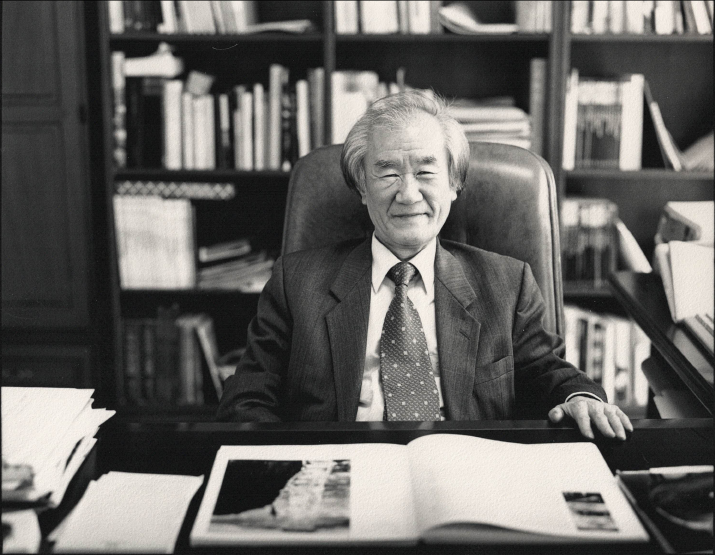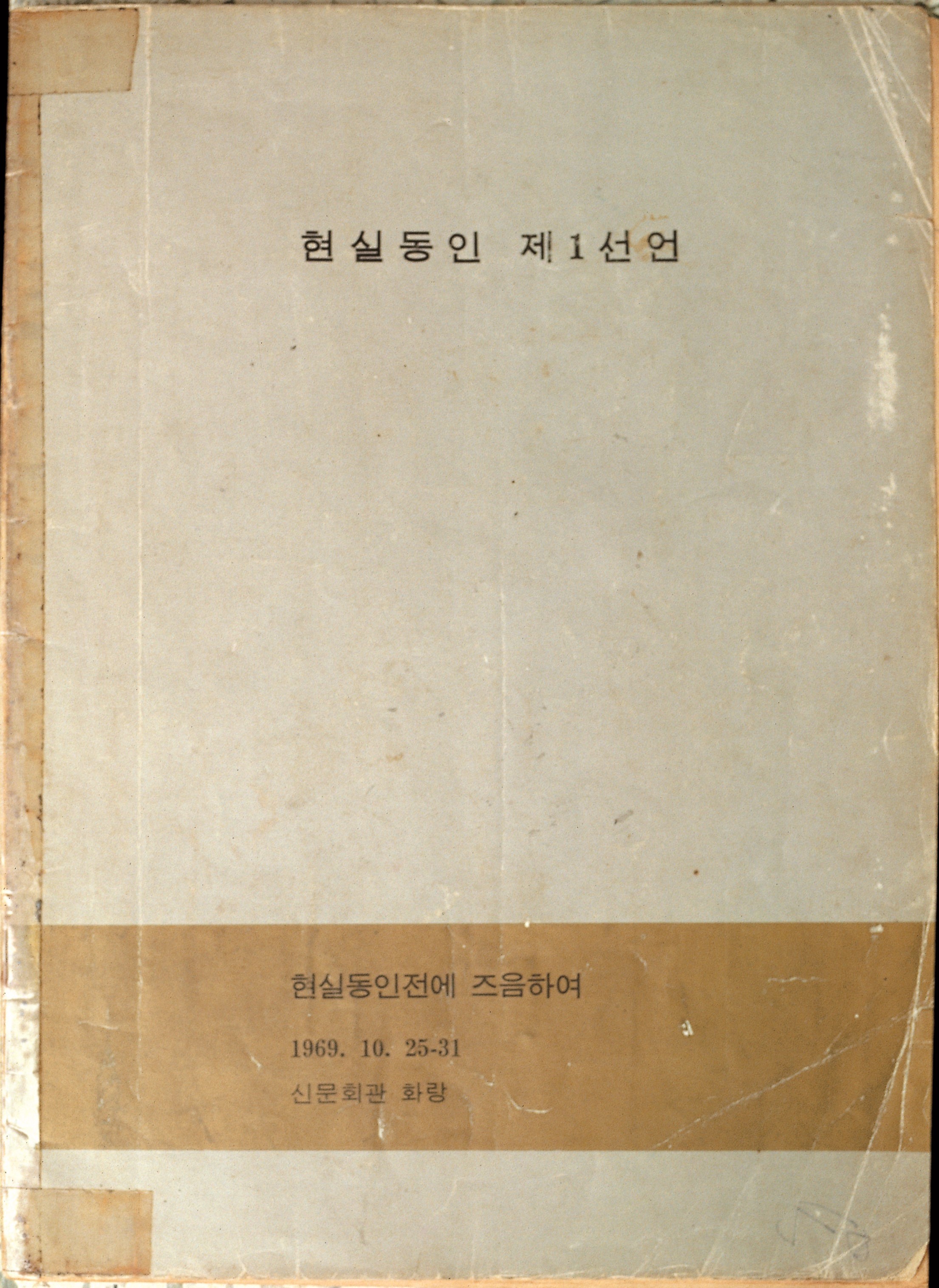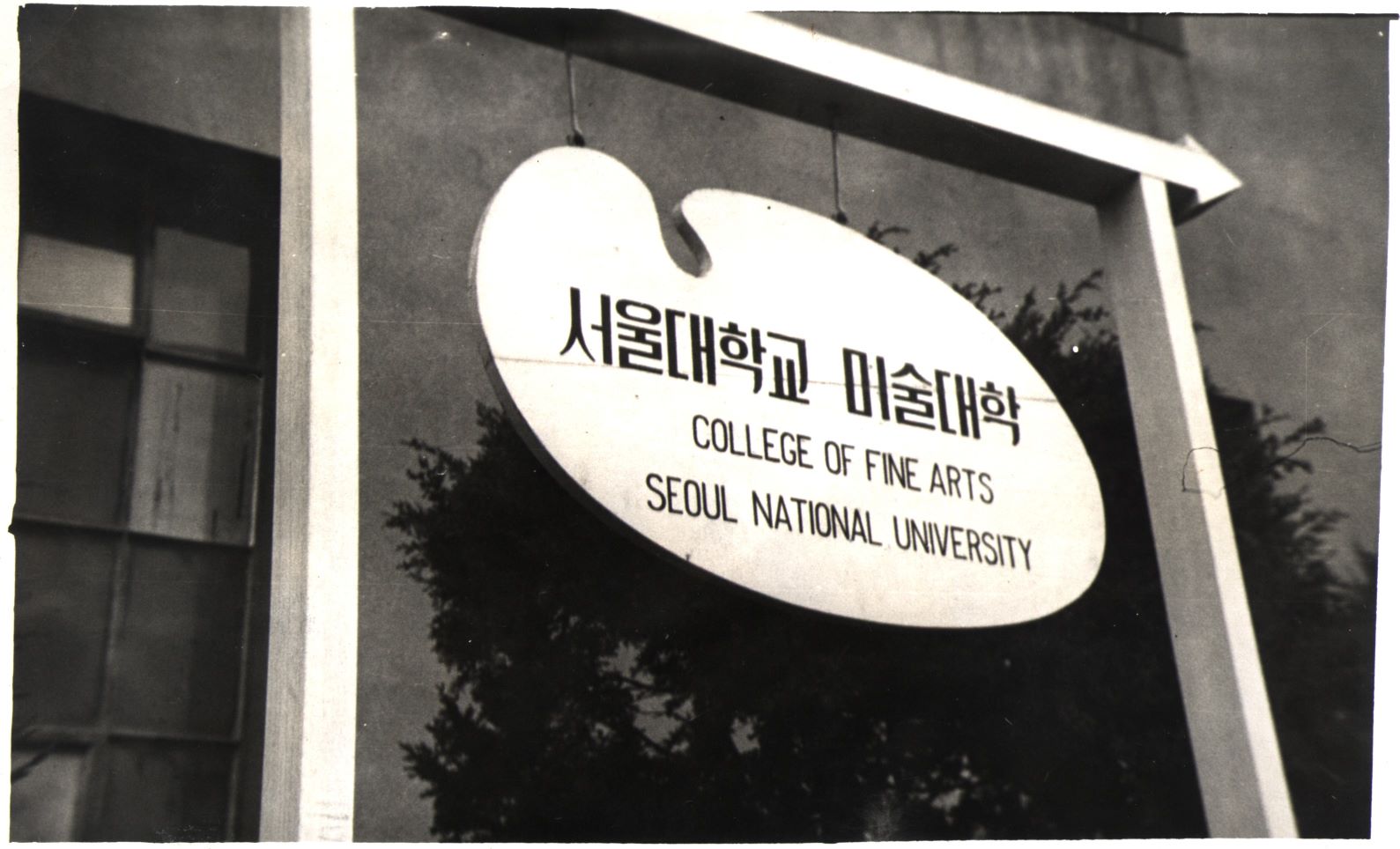
Oh Yoon, Vindictive Spirits, 1984, Oil paint on canvas, 69×462cm. MMCA collection
Oh Yoon
* Source: MMCA
Related
-

Minjung Art
An artistic movement that came to prominence alongside Korea’s democratization movement in the 1980s. Minjung artists often sought to critically portray the violent repression and corruption of the military dictatorship, to represent the experiences of laborers and farmers, and to achieve social change through art. In contrast to abstraction, which constituted the mainstream of 1970s art in Korea, Minjung Art is notable for the use of representational and figurative forms. One possible point of origin for Minjung Art is Oh Yoon’s work in the Reality Group (Hyeonsil dongin). The group was formed in 1969 by Kim Ji-ha, Oh Yoon, and Lim Se-taek. A variety of Minjung art groups were established, including the Reality and Utterance (Hyunsilgwa bareon) in 1979 by Kim Jungheun, Oh Yoon, Joo Jae-hwan, art critic Sung Wan-kyung, and Choi Min, the Gwangju Freedom Artist Association (Gwangju jayu misulin hyeopuihoe) in 1979 by Hong Sungdam and Choi Youl, the Imsulnyeon (The Year Imsul) in 1982, and the Dureong in 1983. These groups all commonly critiqued Western capitalism. In terms of form, Minjung artists adopted traditional and ethnic folk modes of expression using diverse media such as collage, printmaking, oil painting, and photography. Following the 15 Years of Korean Minjoong Arts: 1980-1994 Exhibition at the National Museum of Modern and Contemporary Art, Minjung Art became an accepted part of Korean art history. Overseas, Minjung Art has also become a recognized term that describes this genre and its unique focus on the political and social history of Korea.
-

Kim Yoon-Soo
Kim Yoon-Soo (1936-2018) belongs to the first generation of Korean art critics. In the 1970s when his contemporaries centered their criticism on modernist art, he gave a critical voice to Korean modernity from the perspective of realist aesthetics. In the 1980s, he began to actively engage himself in criticism while aligning himself with Minjung artists. Born in Yeongil, Gyeongsangbuk-do Province in 1936, Kim Yoon-Soo graduated from the Department of Aesthetics in the College of Humanities at Seoul National University and from the same graduate school. In 1969, Kim participated in the formation of the Reality Group [Hyeonsil dongin]. Following “Art and Alienation” in Changjak gwa bipyeong (Creation and Criticism) in the spring of 1971, he published articles on Korean modern and contemporary artists, such as Ko Huidong, Lee Jungseop, Park Sookeun, Kim Whanki, and Oh Chiho. In 1975, he published his only book, Hanguk hyeongdae hoehwasa (The History of Korean Contemporary Painting; Hanguk Ilbo newspaper company). In the 1980s, he presented his critical writings that supported new figurative artists mainly in Gyegan misool (Art Quarterly), serving as a spiritual anchor for Minjung art movement. After his death, Kim Yoon-Soo jeojakjip (Collected Writings by Kim Yoon-Soo) (Changbi, 2019), a collection of his writings, was published. In addition to criticism, Kim wrote Geundae hoehwa sosa (A Short History of Modern Painting) (Iljisa, 1972) and translated several publications, including Bauhaus (Mijinsa, 1978), Geojangdeurui jahwasang (Self-Portraits of Masters) (Jiinsa, 1978), Hyeongdae misurui wolli (The Philosophy of Modern Art) (Youlhwadang, 1981), Pikasoui seonggonggwa silpae (The Success and Failure of Picasso) (Mijinsa, 1984), and Hyeondae misulsaron (Modern Art: Nineteenth and Twentieth Centuries) (Kkachi, 1989). He was an art educator and worked as the head or director of major art organizations and art museums. For example, he served as a professor at Ewha Womans University (1973–1976) and Yeungnam University (1980–1981), a publisher of Changjakgwa bipyeong, the president of Changbi Publishers (1983–1988), the director of the Seoul Museum (1981–1982), the board chairman of the Korean People's Artist Federation (2000–2008), and the director of the MMCA (2003–2008).
-

Reality Group
An artists’ group concerned with the creation of a national aesthetic and realism. The group was formed by Oh Yoon, Lim Setaek, and Oh Kyunghwan, who were students at the Seoul National University College of Fine Arts in 1969. The inaugural exhibition of Reality Group was originally planned to be held at the Sinmunhoegwan Gallery from October 25 to 31, 1969, but the exhibition was canceled due to pressure from local authorities, after it was reported to the government by the university. However, knowledge about the existence of the group and its aims resulted from the inclusion of the 1st Declaration of the Reality Group (written by aesthetics major Kim Jiha and edited by Kim Yoon-Soo) in the catalogue for the inaugural exhibition. The stated goal of the Reality Group was to establish a new national art theory based on realist art that could usefully account for Korean tradition of visual culture. This influence of this approach was kept alive through Oh Yoon’s participation in the Reality and Utterance (Hyunsilgwa bareon) of the 1980s.
Find More
-

College of Arts at Seoul National University
The College of Fine Arts of Seoul National University is located in Sillim-dong, Gwanak-gu, Seoul. According to the Decree on the Establishment of Seoul National University, the College of Art including the Department of Fine Arts and the Department of Music was founded in August 1946 at Seoul National University. The Department of Fine Arts consisted of sub-departments of Painting I, Painting II, Sculpture, and Design. It was organized by Chang Louis Pal and Lee Soonsuk. Chang Louis Pal had served as head of the Education and Management Bureau in the U.S. Army Military Government in Korea (USAMGIK) in Korea since December 1945. Lee Soonsuk assumed practical tasks as an advisor to the art section of the USAMGIK from 1946 when the Education and Management Bureau was changed to the Ministry of Culture and Education. In 1946, there were nine faculty members at the Department of Fine Arts in the College of Art: Chang Louis Pal, Kim Yongjun, Gil Jinseop, and Lee Jaehun as professors; Yun Seung-uk and Lee Soonsuk as associate professors; and Kim Whanki, Chang Woosoung, and Lee Byeonghyeon as assistant professors. However, after the incident of Korean students and professors’ protest against the U.S.’s attempt to merge several colleges and universities into a single university, Kim Yongjun, Gil Jinseop, and Kim Whanki resigned. In 1954, the College of Art was reorganized into the College of Fine Arts with three departments of painting, sculpture, and applied art. The Department of Aesthetics, which had temporarily belonged to the College of Fine Arts since 1948, was transferred to the College of Liberal Arts and Sciences in 1960. In 1963, according to the relocation plan of the Seoul National University main school building, the College of Fine Arts was moved to the former veterinary department building in Yeongeon-dong, Jongno-gu. In 1972, it was moved to the liberal arts department building in Hagye-dong, Seongbuk-gu, and then in 1976, to the current Gwanak campus. In 1981, the three departments of painting, sculpture, and applied art were reorganized into the five departments of Eastern painting, Western painting, sculpture, crafts, and industrial art. In 1989, the Department of Industrial Art was renamed the Department of Industrial Design, and in 1999, the Department of Crafts and the Department of Industrial Design were merged into the School of Design. Currently, the College of Fine Arts consists of the Department of Oriental Painting, Department of Painting, Department of Sculpture, Department of Craft, Department of Design, and Interdisciplinary Programs.
-

15 Years of Korean Minjoong Arts: 1980-1994
Fifteen-Years of Minjung Art was a historical exhibition held at the National Museum of Modern and Contemporary Art from February 5 to March 16 in 1994. This monumental exhibition comprehensively covered the history and achievements of the Minjung Art movement during the 1980s. The initial idea for the exhibition began in early 1993 when Minjung artists visited the director of the National Museum of Modern and Contemporary Art to talk about the essential need for an exhibition on Minjung Art, in relation to the recent completion of the struggle for democracy that took place over the 1980s. The exhibition consisted of four sections - “Formation of Minjung Art,” “Achievements of Banner Paintings and Collaborative Creation” “Expansion and Improvement of Minjung Art,” and “Achievement and Advancement of Creation.” A Total of 389 works, including 234 paintings, 68 prints, and 200 related documents were exhibited. Some art critics pointed out the limitations of the Minjung Exhibition due to its lack of overall clear organization, the apparently undiscerning selection of artworks and artists, and other issues regarding curation and arrangement. With the completion of the exhibition many critics questioned the apparent institutionalization of Minjung Art given its approval by the governmental authorities, and the subsequent absence of a clear future direction for the movement given its previous primary anti-authoritarian rationale.






